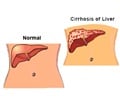A new study has found that adolescent alcohol abuse may lead to long-term risky decision making.
A new study has found that adolescent alcohol abuse may lead to long-term risky decision making.
In the research, University Washington scientists have investigated the neurobiological underpinnings of a link between adolescent alcohol abuse and later adult decision-making impairments.The research, being published this week in the online edition of the Proceedings of the National Academy of Sciences, appears to show a causal link between early heavy drinking and adult decision-making.
"We know early exposure to alcohol and other substances is a predictor of later substance abuse in humans. It is a novel concept to think that early exposure might have long-term cognitive effects. But we can't test this on people. This model using rats lends support to causal link between early alcohol use and later increased risky decision making," said Nicholas Nasrallah, a UW psychology doctoral student and co-author of the study.
"We can't establish causal links based on existing human data but this animal model allowed us to establish this link," said corresponding author Ilene Bernstein, a UW professor of psychology and faculty member of the program in neurobiology and behavior.
"Scientists believe regions of the brain, including those implicated in decision making, are slow to develop and development extends into adolescence. This study shows that these late-developing structures in rats are affected by high alcohol use," the expert added.
"Rats typically do not drink alcohol, but researchers have found that they will consume ethanol when it is combined with gelatin. For this study, one group of rats was given 24-hour access to a 10 percent solution of ethanol in a tasty gel.
Advertisement
A separate control group of rats was given a gel made without any alcohol. At the end of the 20 days the gelatin was withdrawn from both groups. Three weeks later, half of the animals from each group were trained to press the levers to receive the treats.
Advertisement
The alcohol-exposed rats showed a strong bias toward the uncertain lever, even when the chance of receiving rewards on the third day diminished to only one in four.
The control rats, however, behaved differently and adjusted perfectly to the changing conditions of the experiment, thus gaining more treats than the alcohol-exposed rats.
A second experiment tested whether effects of adolescent alcohol exposure were persistent by waiting three months after the gelatin was withdrawn before testing the remaining rats. The effects were the same suggesting that the influence of adolescent alcohol exposure on decision making does not diminish over time.
"The known association between behavior and high levels of alcohol use puts people at risk for a number of bad outcomes, particularly substance use," said Bernstein.
"Age of exposure to drugs is the No. 1 factor predictive of substance abuse later in life. Adolescent drinking is an epidemic today. This research raises a concern that if the brain is permanently changed by alcohol we need to place more emphasis on preventing adolescent alcohol use," the expert added.
Source-ANI
ARU










